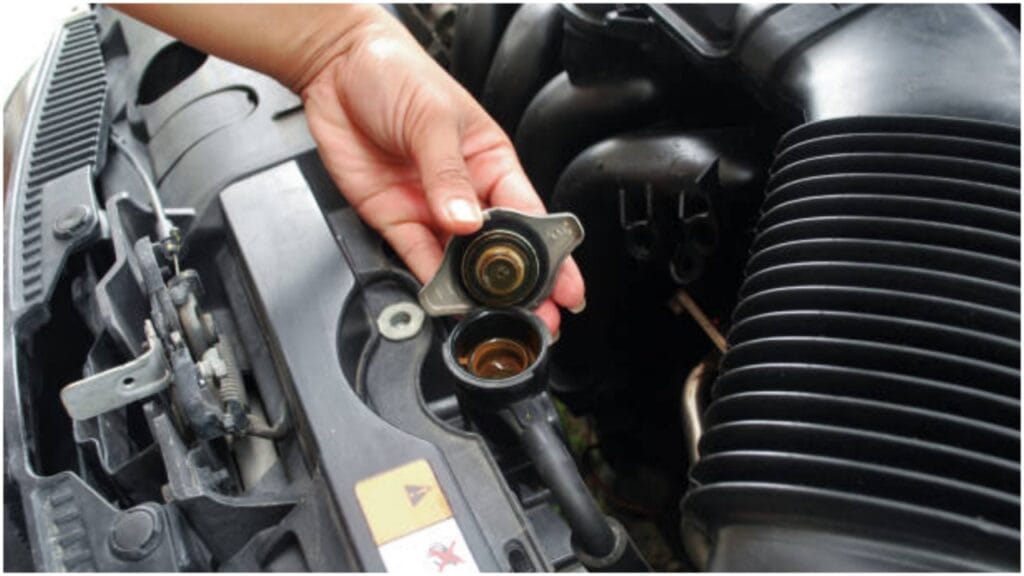A leaking water pump gasket? Yeah, we’ve been there. It’s one of those car problems that sneak up on you, but don’t worry—we’ve got your back. We’ve dealt with enough of these to know exactly what to do, and we’ll walk you through it step by step.
So, here’s the deal. When the water pump gasket goes bad, coolant starts leaking out, which can lead to overheating. The best move? Stop driving, let the engine cool, check the pump, and replace the gasket if needed. If you ignore it, you might end up with serious engine trouble.
But hold on, there’s more to it than that. We’ll show you how to spot the leak early, fix it the right way, and even prevent it from happening again. Let’s dive in!
Stop Driving Right Away
If your water pump gasket is leaking, the first thing you need to do is stop driving. Seriously, don’t risk it. Coolant is what keeps your engine from overheating, and if too much leaks out, things can go south fast. An overheated engine can lead to major damage—think warped heads, blown gaskets, or even a seized engine.
It might not seem like a big deal at first, maybe just a few drips under the car. But leaks only get worse. The longer you drive, the more coolant you lose, and the hotter your engine gets. That’s a recipe for disaster.
If you’re on the road when you notice the leak, find a safe place to pull over. Turn the engine off and let it cool before doing anything else. It’s always better to fix a small problem now than deal with a huge repair bill later.
Inspect the Water Pump
Now that the engine isn’t crazy hot, let’s take a good look at the water pump. We need to figure out if it’s just the gasket leaking or if the pump itself is giving up on us. Trust me, skipping this step could mean fixing the wrong thing, and nobody wants that.
First, check around the pump. Do you see any dried-up coolant? Maybe some wet spots or a little puddle forming? If yes, the gasket is probably the troublemaker. But don’t stop there—look closely at the pump itself. If it has cracks, rust, or corrosion, that’s a big red flag. A bad gasket is one thing, but a failing pump? That’s a whole different problem.
Now, give the pulley a little spin. Does it feel loose? Wobbly? Maybe it makes a weird noise? If it does, the pump’s bearings might be shot. And if that’s the case, the pump needs to go. A shaky water pump can mess up your belts and leave you stranded.
So, here’s the deal—if it’s just the gasket, replacing it should do the trick. But if the pump itself looks rough, don’t wait for it to fail. Trust us, a bad pump can turn a small fix into a huge headache fast.
Try a Quick Fix (If You Must)
Okay, sometimes you just need a quick fix to get you through the day. Maybe you’re stuck in the middle of nowhere, or you just don’t have the time (or tools) to do a full repair right now. We’ve been in that spot, and yeah, there are a couple of things you can try.
First, there’s coolant stop-leak. It’s a liquid you pour into the radiator, and it can help slow down small leaks. It won’t fix the problem forever, but it might buy you some time if you need to make it home or to a shop. Just don’t rely on it for too long—your engine deserves better.
Another thing some people try is a little gasket sealant. If the leak is small and easy to reach, applying a bit of high-temp sealant around it might help. But let’s be real—it’s not a permanent fix. Once the gasket is bad, it’s only a matter of time before the leak gets worse.
So, yeah, a quick fix might get you out of a tough spot. But don’t wait too long to do the real repair. Trust us, a little leak today can turn into a blown engine tomorrow—and that’s a nightmare nobody wants.
Replace the Gasket Properly

No more band-aid fixes—it’s time to do this the right way. We’ve replaced enough water pump gaskets to know that cutting corners will only make things worse. It might take a little effort, but trust us, it’s worth it.
First things first—drain the coolant. If you don’t, you’ll have a big mess on your hands. Put a bucket under the radiator, open the drain valve, and let it all out. Once that’s done, remove the serpentine belt so you can get to the water pump.
Now, it’s time to take the pump off. Some bolts might be a little stubborn, so be patient. Once the pump is off, do not rush this next step—clean off every bit of the old gasket. We mean every single bit. If you leave even a tiny piece behind, the new gasket won’t seal right, and you’ll be right back where you started.
Next, put the new gasket in place. Some cars need a little gasket sealant, while others don’t—so check your manual. Line up the pump carefully, then tighten the bolts evenly. Don’t overtighten! You don’t want to crack anything.
Once everything is back together, refill the coolant and bleed out any air bubbles. Now, start the engine and keep an eye on it. No leaks? No overheating? Then you just fixed your water pump gasket like a pro. Feels good, doesn’t it?
Refill the Coolant
We’re almost done! Now we just need to get fresh coolant back in the system. Sounds easy, right? Well, it is—as long as we do it the right way. We’ve learned the hard way that rushing this step can lead to air pockets, and those can make the engine overheat. So, let’s take our time.
First, make sure you have the right coolant for your car. Not all coolant is the same, and trust us, using the wrong kind can cause all sorts of problems. Check the owner’s manual, grab the right stuff, and let’s get to it.
Now, start pouring the coolant into the radiator or reservoir slowly. If you pour too fast, air can get trapped, and that’s no good. Some cars have a little bleeder valve to help get rid of air bubbles—if yours has one, go ahead and open it while filling.
Once you’ve got the coolant in, start the engine and let it run for a bit. Watch the temperature gauge and check for bubbles. As the coolant settles, you might need to add a little more. When the level stays steady and there’s no overheating, you’re good to go! And that’s it! Fresh coolant, no leaks, and an engine that’s ready to roll.
Conclusion
And that’s it! We made it through the whole process. A water pump gasket leak might start as a tiny problem, but if you let it go, trust us, it turns into a huge headache. Coolant leaks lead to overheating, and overheating. Well, that can destroy an engine. Nobody wants that.
We’ve been there, and we know fixing it the right way is the best move. We checked for leaks, replaced the gasket, refilled the coolant, and made sure everything was running smoothly. Yeah, it takes a little work, but it’s so worth it. A good repair now means no surprises later.
The most important thing? Don’t ignore a leak. If you see coolant dripping, don’t wait until your engine overheats. Fix it as soon as possible, or if you’re not up for the job, get it to a mechanic before it gets worse. A small fix today saves you a huge repair bill tomorrow.
Now you know exactly what to do if this ever happens again. Keep an eye on your coolant levels, check for leaks now and then, and you’ll keep your car running strong. Feels good to stay ahead of the problem, doesn’t it?

